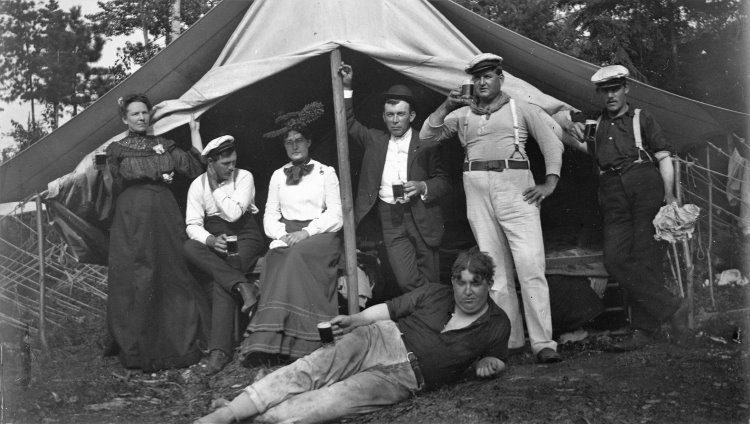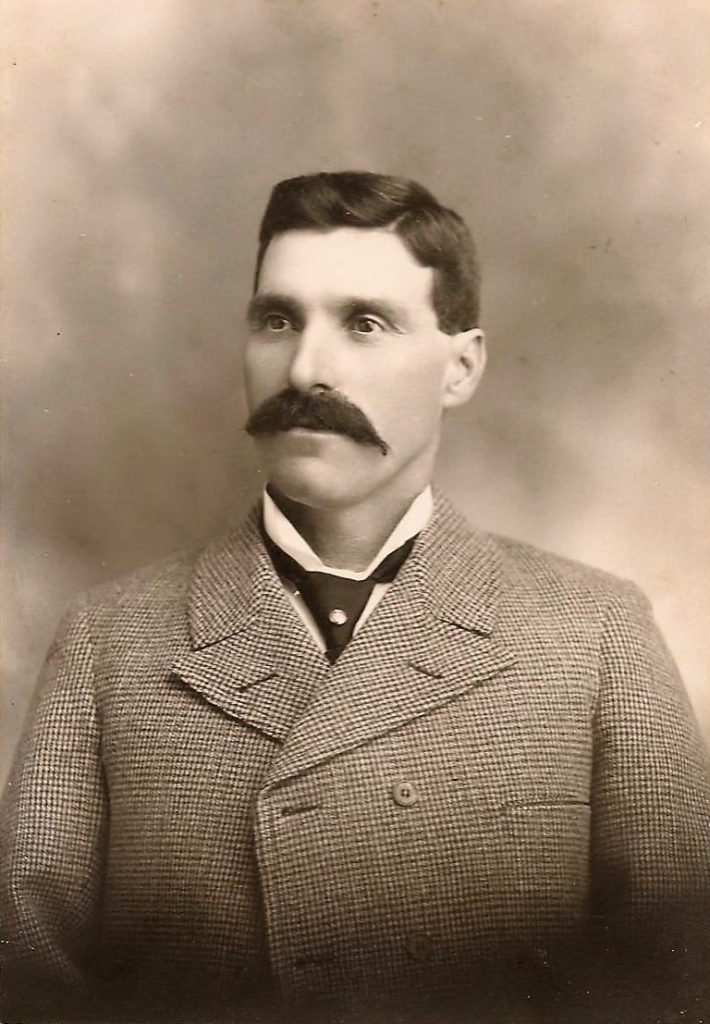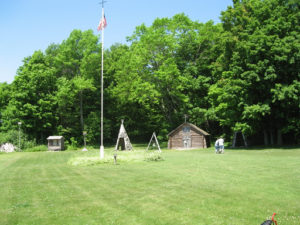
A turn of the century era group camping on Indian Lake.
Camping at Indian Lake was all the rage for Manistique residents during the 1890’s and early 1900’s. An orderly row of tents lined both sides of a broad street near the present Bishop Baraga Shrine and cemetery. Clear and pleasant tasting drinking water was readily available from a nearby spring. Fresh milk and eggs for breakfast could be purchased at the Miller farm, which then occupied the future site of the Arrowhead Inn (now just a faded memory). In the evening, the campers gathered around the large bonfire which illuminated the grounds; while musicians with violins and harmonicas accompanied a chorus of campers singing the popular “Gay Nineties” ballads of the day. The children spent their days playing, swimming and eating homemade ice cream and their evenings roasting marshmallows and popping popcorn.


